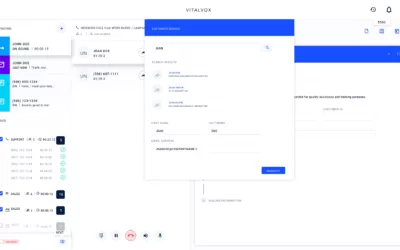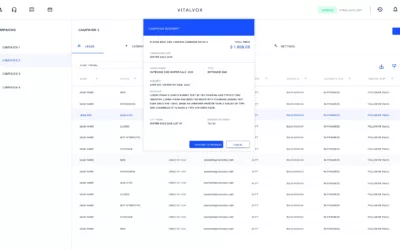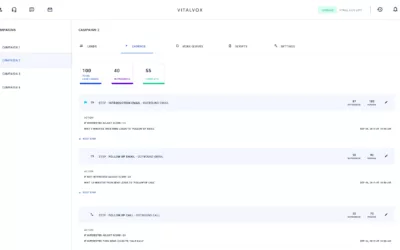In today’s fast-paced digital world, the gap between traditional education and modern technology is closing quickly. Educational software solutions are leading this transformation by making learning more engaging, accessible, and efficient for all students and educators. Moreover, these solutions are designed to meet the unique challenges of today’s classrooms. From AI-powered tools to collaborative platforms, these innovations are reshaping education. But how are they accomplishing this, and what benefits do they bring? Let’s dive in.
How Educational Software is Changing Learning
1. Expanding Accessibility for All Learners
One of the greatest advantages of educational software solutions is their ability to make learning more accessible. Through cloud-based platforms, mobile apps, and online resources, students can now access education anytime, anywhere. This is especially impactful for learners in remote areas or those requiring additional support due to disabilities or functional needs.
For example, tools like text-to-speech software and screen-reader-compatible platforms ensure that students with disabilities can fully engage with digital resources. Furthermore, cloud technology allows schools to share resources across vast geographic regions, providing learners with opportunities that were previously out of reach. By addressing diverse needs, these technologies empower all learners to participate fully in their education.
2. Enabling Personalized Learning Pathways
Every student learns at their own pace and in their own way. Educational software solutions make it easier than ever to adapt to these differences. Through the use of AI and data analytics, tools like adaptive learning platforms can assess a student’s progress and adjust content to suit their unique needs.
For instance, applications such as Khan Academy and Duolingo use AI to dynamically tailor lessons based on a student’s performance. Consequently, learners receive content that is neither too difficult nor too easy, which keeps them engaged and motivated. Additionally, this personalized approach enhances knowledge retention by addressing specific strengths and areas for improvement.
3. Reducing Administrative Burdens for Educators
Teachers and administrators often face heavy workloads due to repetitive tasks such as grading, tracking attendance, and generating reports. Fortunately, educational software streamlines these processes, giving educators more time to focus on teaching.
For example, Learning Management Systems (LMS) like Blackboard or Canvas make it simple to distribute assignments, track student performance, and provide feedback—all from one central hub. Similarly, automated grading tools reduce the time teachers spend reviewing tests and assignments, allowing them to dedicate more energy to individual student needs. By simplifying these tasks, these tools enable educators to work more efficiently while enhancing the quality of instruction.
Promoting Collaboration Through Technology
Collaboration is an essential skill in both education and the modern workforce. Today’s software solutions foster teamwork through interactive tools like virtual whiteboards, video conferencing, and shared document platforms.
During the rise of remote learning, tools such as Microsoft Teams and Zoom became indispensable for keeping classrooms connected. In addition to facilitating teacher-student interaction, these platforms encourage peer-to-peer learning. For example, students can work together on group projects, share ideas, and solve problems collaboratively, even if they are in different locations. As a result, learners develop critical communication and teamwork skills, which are invaluable for future success.
Driving Innovation with Emerging Technologies
The future of education is intertwined with cutting-edge technologies like virtual reality (VR), augmented reality (AR), and artificial intelligence (AI). These innovations are already creating immersive and engaging learning experiences that bring abstract concepts to life.
For instance, VR allows students to virtually explore ecosystems, historical landmarks, or even outer space, making complex subjects more tangible and exciting. Similarly, AR overlays interactive elements onto real-world settings, which enhances understanding by making lessons more visual and interactive. Meanwhile, AI-powered tools are transforming how educators assess and support their students. For example, AI can analyze learning patterns and provide detailed insights that help teachers refine their strategies. As these technologies continue to evolve, they will unlock even more opportunities to improve education.
Conclusion: Educational Software Solutions for a Brighter Future
Educational software solutions are doing far more than digitizing classrooms—they are reimagining the entire learning experience. From expanding accessibility and personalizing education to streamlining processes and fostering collaboration, these tools are bridging the gap between traditional teaching and the needs of the digital age.
Additionally, the integration of emerging technologies like VR, AR, and AI ensures that education keeps pace with innovation while preparing students for a tech-driven world. As these tools continue to evolve, they will create opportunities to engage students, support educators, and build more inclusive learning environments. Ultimately, this shift is about more than just technology; it is about creating a more adaptable and equitable education system for all.
Contact Us to Transform Education Today
Ready to explore how educational software solutions can make a difference for your institution? Our team specializes in creating innovative, scalable, and user-friendly tools to meet the diverse needs of today’s learners. Contact us today to discover how we can help you build a more connected and inclusive learning environment!



